If you’ve been looking for the best adventure games for Mac, I have a treat for you. I’ve compiled a list of ten great games that will test your skills, make you laugh and some may even make you cry.
Adventure games are a genre that appeals to the imagination. They often allow for exploration of an open world and reward players for their ability to solve puzzles and follow a storyline.
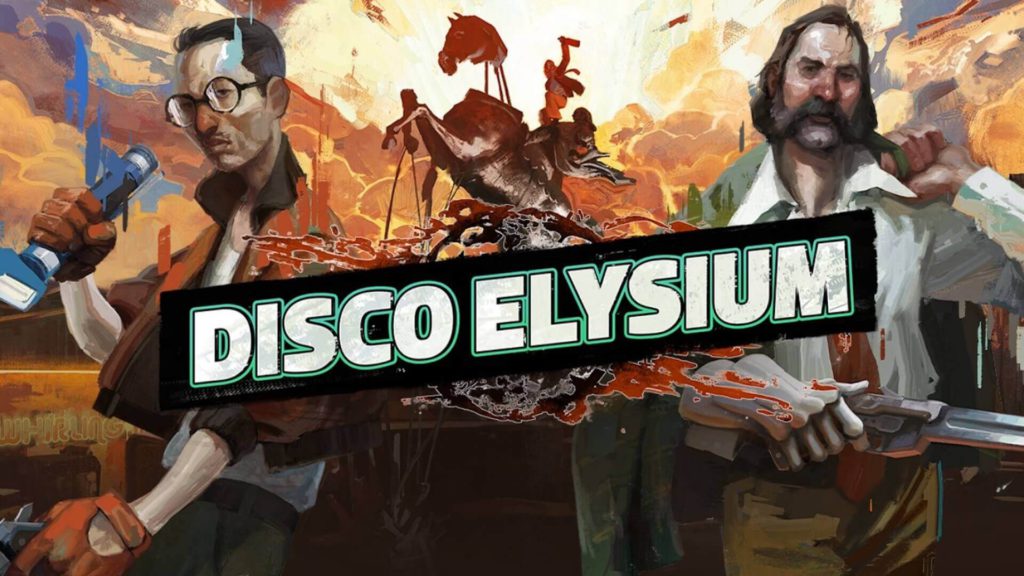
Adventure games are point-and-click titles that emphasize puzzle solving over fast action. Notable franchises include The Secret of Monkey Island, Sam & Max, King’s Quest and Broken Sword.
The best adventure games for Mac have captivated players for decades by telling fantastic stories, putting you in the shoes of a hero (or villain) exploring amazing worlds and presenting puzzles to solve.
Adventure games have their roots in the text-adventure games of the 1970s, but they’ve come a long way since then. Today’s top adventure games are immersive, visually stunning and full of action.
These games offer little in terms of mechanical complexity and often eschew traditional notions of challenge. Instead, adventure games are about the experience—what you see, how you feel, and what you do next. It’s an interactive story that’s more about the journey than the destination.
Adventure games can be daunting because they’re so different than other video game genres. But if you’re looking for something unique and thought-provoking, they’re definitely worth checking out.
The genre of adventure games is very diverse, with many subgenres. There are games that you need to solve puzzles and mysteries, find clues, and make decisions to complete. Others are more action oriented, featuring dynamic battles and fights. Games featured on this list have a wide range of gameplay elements, so you don’t have to worry about getting bored with one type of gameplay.
Adventure games are all about solving puzzles, being a detective, and exploring new worlds. Some of the best adventure games can be found on the Mac and we’ve listed our absolute favorites below. This list is in no particular order, so pick whichever game suits your fancy or try them all!
Below is a list of the 8 best adventure games for Mac. Each game has a unique setting and storyline, making them all worth checking out:
1. Observer
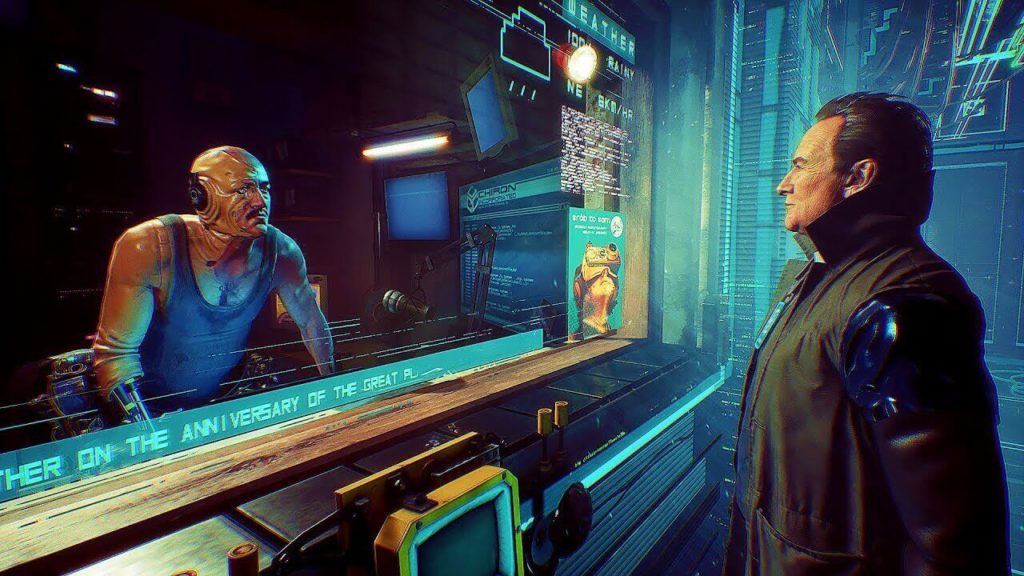
Where to buy: GOG (£22.99/$29.25), Steam (£22.99/$29.99) System requirements: macOS 10.12.6, 3GHz quad-core processor, discrete GPU (2GB VRAM recommended)
Observer is a psychological horror Adventure game from the creators of Layers of Fear.
If you’re a fan of cyberpunk, you might have heard about the Observer adventure game. It’s based on a book series and has to do with an augmented reality drug, so there’s that aspect that makes it interesting.
The Observer adventure game is set in 2084 in Krakow, Poland after a war had broken out. The city is now under military control and one of the main characters you’ll play as is Dan Lazarski. He’s an elite detective who is able to hack into people’s minds, which allows him to see what they’ve seen and also feel what they’ve felt.
In this version of the future, your mind can be invaded by someone else, so if you get nervous or scared while you’re being hacked, it will show on your face. If you have an augmented reality implant, you can be hacked by an “Observer,” hence the name of the game.
Observers are able to hack into people’s minds, and investigate crimes by experiencing them through another person’s perspective. Lazarski is investigating a murder in an apartment building, but as he gets closer to solving the crime he has to confront his own past.
The game is played from a first person perspective, and you can use your technology to hack into other people’s minds and see what they’ve been seeing through their eyes. You have to find evidence, solve puzzles and talk to other characters.
Despite its short length and a couple of missteps, Observer: System Redux is an intelligently designed, visually haunting slice of cyberpunk fiction.
There are a number of ways you can fail in Observer, so having multiple saves is advised. The game will warn you if you’re doing something wrong or if there’s a mistake that can’t be undone.
➡ Sid Meier’s Civilization VI Review
The first thing that stands out about Observer are the intricate, blocky, yet detailed 3D environments. You play as Daniel Lazarski, an augmented detective who has entered a gigantic apartment building in order to analyze and gain information about its inhabitants.
Since the building is littered with crime and murder, it’s not surprising that many of them are hostile towards Lazarski and attack him on sight.
The visual design of these hostile opponents is particularly impressive–while they all appear to be humanoid, each one is vastly different in appearance. There are some who have legs melted into their torsos, others whose faces have peeled away to reveal machines underneath, while still others stumble around mindlessly, jaws hanging open.
The first half of the game involves exploring and gathering evidence to solve a string of crimes in one particular apartment building. Lazarski is equipped with a “Multi-Tool” that enables him to scan, hack, and unlock doors around the building. Using the Multi-Tool is fun because it provides some great detective work that lets you really feel like you’re using your special futuristic detective powers to get inside locked rooms and storage closets.
The characters are similarly well-developed as they feel like real people. Even though they play very differently, they have convincing personalities that make you care about each of them as the game goes on. This combined with fantastic voice acting (which always helps ground the story) and a gripping plot made me look forward to exploring the building and discovering its secrets.
While the gameplay is similar to the original, there are some significant changes to the game’s structure. Observer: System Redux features three new narrative side missions, which can be played at any time during or after the main campaign. They add a lot of context to the world and its characters; each one dives into a different aspect of life in Krakow, from those living in abject poverty to a serial killer who uses the Observe ability to his advantage.
One thing that hasn’t changed is how well-written and performed Observer is. Rutger Hauer voices protagonist Daniel Lazarski, and he does an incredible job bringing this grizzled detective to life. The game never shies away from tough themes like addiction, trauma, death, and suicide. It tackles these topics with nuance and care, often through emails and audio logs you find scattered throughout Krakow — I frequently found myself drawn in by the personal stories of individuals from all walks of life.
➡ Best big and tall gaming chair
There are a few bugs here and there, but nothing that seriously affected my experience with the game. At one point during one of the new side missions that take place in a sewer system, I was unable to progress because I couldn’t interact with a small hologram in the game.
If you are the type of person who dabbles in casual horror games such as Slender or Five Nights at Freddy’s, but want to take things a step further, Observer: System Redux is an excellent starting point. It’s a short, atmospheric game that forces you to truly pay attention and makes you work for every scrap of progress you make.
For gamers interested in escape rooms or just want a little extra challenge when it comes to scavenger hunts and puzzles, this game will give you plenty to think about without relying on cheap jump scares.
Despite the short length and handful of drawbacks, I wholeheartedly recommend Observer.. The terrifying environments, unique mix of gameplay-centric storytelling, and solid soundtrack made the 6-8 hour campaign an absolute blast. Each playthrough is different, depending on your choices in the game, which makes the replayability quite high. I look forward to seeing where this series goes next!
2. Kerbal Space Program
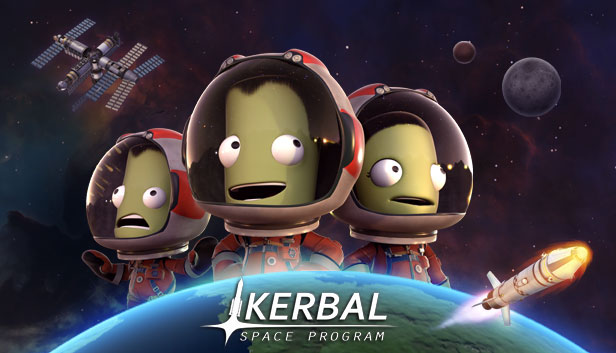
Kerbal Space Program is an indie adventure game developed and published by Squad in 2015. Take command of the space program for the alien race known as the Kerbals. You have access to an array of parts to assemble fully-functional spacecraft that flies (or doesn’t) based on realistic aerodynamic and orbital physics.
Launch your Kerbal crew into orbit and beyond (while keeping them alive) to explore moons and planets in the Kerbol solar system, constructing bases and space stations to expand the reach of your expedition.
Kerbal Space Program has a rich history. In the seven years since Squad released the game on Steam Early Access, it’s been through three big stages of development.
First, it was an entertaining sandbox where players could build spaceships and watch them explode predictably in the atmosphere of Kerbin.
Second, it was a moderately accurate rocket science simulator populated by charming green aliens.
Now, it’s something else entirely: An adventure game that tells compelling stories about space travel and exploration.
Kerbal Space Program is a multi-genre game where the players create their own space program. In KSP, you must build a space-worthy craft, capable of flying its crew out into space without killing them. At your disposal is a collection of parts, which must be assembled to create a functional ship. Each part has its own function and will affect the way a ship flies (or doesn’t).
So strap yourself in, and get ready to try some Rocket Science!
The game has different game modes: Sandbox, where you are free to build anything you can think of; Science Mode, where you can perform Scientific experiments to advance the knowledge of Kerbalkind and further the available technology; Career Mode, where you must manage every aspect of your Space Program, including administration strategies, Crew Management, Reputation and more.
Though Kerbal Space Program is a game, it’s not really a game in the sense that you might think. It’s not about completion or victory, but rather discovery and exploration. The game allows you to build and test rocket ships and other spacecraft, but from the beginning it warns that if your goal is to finish it or win it, you’ll be disappointed.
➡ Best office Chair for Gaming
The goal of the game is to explore space by building rockets out of a variety of parts, launching them and seeing what happens. If they blow up in their launch pad or crash on landing, that’s fine. If they don’t make it off the planet (Kerbin), that’s also fine. If they do make it off the planet but fly out into space forever with no way to come back, well … that’s not ideal, but it happens sometimes.
This all sounds incredibly frustrating, but it’s actually a lot of fun. The game has some tutorials that walk you through basic concepts and controls, but like Minecraft before it, Kerbal Space Program is more about self-directed learning and exploration than anything else.
First things first: You will fail to get into space for several attempts (probably many more than just several) and you should expect your first few attempts to fail.
It took me a long time to get the hang of Kerbal Space Program. For hours, I launched my crewed vessels into space and watched as they broke up on the launchpad or careened out of control into the stratosphere before exploding.
If something actually made it into orbit, it would inevitably tumble out of control and burn up in the atmosphere, costing me valuable resources and the lives of my brave astronauts. But slowly, inexorably, I got better at building spacecraft.
A new part here or there was all it took to get me to my next goal — an orbit around Kerbin (the game’s Earth-like planet), then a landing on its moon and back into orbit, then a trip around another planet and so on. Each new challenge was exciting not just because it was cool to accomplish but because it opened up many more possibilities.
I could go on and on about how much I like Kerbal Space Program. You might even call me obsessed with it. As soon as I got done writing this review, what did I do? I fired up my copy of the game and launched myself back into space, of course. It’s fun, rewarding, and something that every aspiring rocket scientist or engineer needs to experience at least once.
I can’t think of a game that’s been this rewarding while still requiring so much effort on my part. Everything in the game takes time and patience to develop, just like actual rocket science, only Kerbal Space Program is much more approachable than the real thing. If you’re looking for an appropriately complex challenge that rewards problem-solving and wits with cold, hard science, you can’t go wrong with Kerbal Space Program.
All in all, I’ve found Kerbal Space Program to be remarkably compelling, from building a rocket and blasting it into the sky to studying extraterrestrial life on other planets. I was always driven to do more: fly higher, build bigger, and discover more. It may be a niche product for rocket science enthusiasts, but in my mind, it’s absolutely one of the best out there.
3. Disco Elysium: The Final Cut
Platforms: PC (Microsoft Windows), Mac, PlayStation 4, Xbox One, Nintendo Switch, PlayStation 5, Xbox Series X|S, Google Stadia Genre: Role-playing (RPG), Adventure, Indie Developer: ZA/UM Publisher: ZA/UM Release: March 30, 2021

Enter the cold and unforgiving world of Disco Elysium: The Final Cut . This point-and-click sci-fi horror adventure game. Many years ago, a disaster struck in space which left everyone stranded on an unexplored planet.
With no hope for rescue, the remaining survivors decided to build themselves new lives in order to forget about the past. But something has followed them, something dark and twisted.
Detective games are my favorite kind of story-driven video game. It’s an age-old trope that’s been in gaming since the beginning. There is something so satisfying about exploring a mysterious murder scene and piecing together the clues to solve a case.
I’ve played many detective games throughout the years and some have been very good, but there’s just never been one that has struck such a perfect balance between mystery and gameplay as Disco Elysium: The Final Cut.
The first thing that stands out to me about Disco Elysium is its art style, which is reminiscent of early 2000s PC adventure RPGs like Baldur’s Gate or Neverwinter Nights.
The art style really helps set the mood for a game that takes place in a semi-fantasy world with some strange characters. The best part about Disco Elysium though is how it uses its art style to tell a story through the environment around you rather than relying on cutscenes or dialogue boxes like most games do today.
This makes each area feel alive with its own unique personality that is influenced by what happens within them as well as who lives there and what their daily lives consist of.
Even if you’re someone who has played Disco Elysium before – through the original release in 2019 or even last year’s remastered version, which added some visual improvements and voice acting – there’s still more than enough here to warrant another playthrough.
The new side quests, for example, are excellent, adding new story threads to follow that offer great rewards in terms of experience points and gear. They also offer some new insight into characters you may have already met on your adventure through Revachol West.
There are also a number of quality-of-life improvements such as an updated crafting system that makes it much easier to create those all-important cocktails.
But the biggest additions come from the game’s fully voiced cast. While I’ll admit I was initially sceptical about this change, I think it’s been done so well that I don’t think I’ll ever go back to playing this game without it again.
Each character is brought to life by an exceptionally talented cast that brings every line to life with gusto, sincerity and even a little bit of slapstick humour too. It helps that Disco Elysium is one of the best written games I’ve ever played and now the jokes land even better than ever thanks to some excellent comedic timing and delivery.
You play as a cop sent to investigate a murder, but the story quickly becomes so much more than that. It’s not easy to describe Disco Elysium without spoiling what happens, but it’s safe to say this is one of the most unique RPGs in years.
The murder investigation starts with no memory of who you are or what happened to you. The game gives you little snippets of information about your character throughout, but choosing which characteristics to explore – and which ones to ignore – is up to you. Your cop could be a risk-taking exploiter, or he could be an intellectual with a strong moral code.
These choices define your character and how you interact with others, often leading to entirely different experiences for players on different playthroughs.
Disco Elysium is a deceptively deep text-based adventure, with the right balance of humor, horror, and roleplaying. Its storyline lives up to its name: in the course of this investigation I danced with robots, conversed with terrifying franken-people, and stumbled upon some truths about my own body that I certainly wish I hadn’t.
Considering that this is an expansion to one of 2017’s best games, in terms of writing, Disco Elysium exceeds expectations… or perhaps they were lowered by the base game. Whether you enjoyed the original game or not(and if you loved it but missed this content, you have no excuse), Disco Elysium is well worth your time and money.
➡ Best Gaming Chair Under $200
While not for the faint of heart or stomach, Disco Elysium takes the Lone Wolf-style interface and story immersion pioneered by the original Discworld game into crazier territory– a territory where your main character can lose limbs and struggle to determine exactly what kind of unspeakable experiments have been performed in the game.
Disco Elysium’s gameplay revolves around four main skill trees: intellect, psyche, physique and motorics. Each skill tree has two further subdivisions that offer bonuses based on how high your skill is – for example, having a high intellect allows you to ask insightful questions during interviews, while also giving you access to more skills as you progress in the game.
Disco Elysium: The Final Cut is an amazing game to play and offers countless hours of mystery and adventure. There are multiple paths, endings, and outcomes that each play-through will yield, and the writing is clever throughout. The customization options give the player some truly unique decisions to make which affect gameplay and outcomes in a variety of ways.
With Disco Elysium you can be a gun for hire, a hardboiled detective, or just some guy who happened to wake up with amnesia.
With plenty of quests to complete and puzzles to solve, Disco Elysium is the sort of game that offers plenty of replay value. On top of the multiple character builds, players can go through and engage in conversation with the city’s many characters and ask them about their secrets and whatnot (giving you even more quests to complete). If you’re looking for a murder mystery with a healthy dose of East Coast hipster culture, Disco Elysium is the perfect choice – just another indie text adventure worth your time.
4. Crusader Kings III
Platforms: Linux, PC (Microsoft Windows), Mac, PlayStation 5, Xbox Series X|S Genre: Role-playing (RPG), Simulator, Strategy Developer: Paradox Development Studio Publisher: Paradox Interactive Release: September 01, 2020
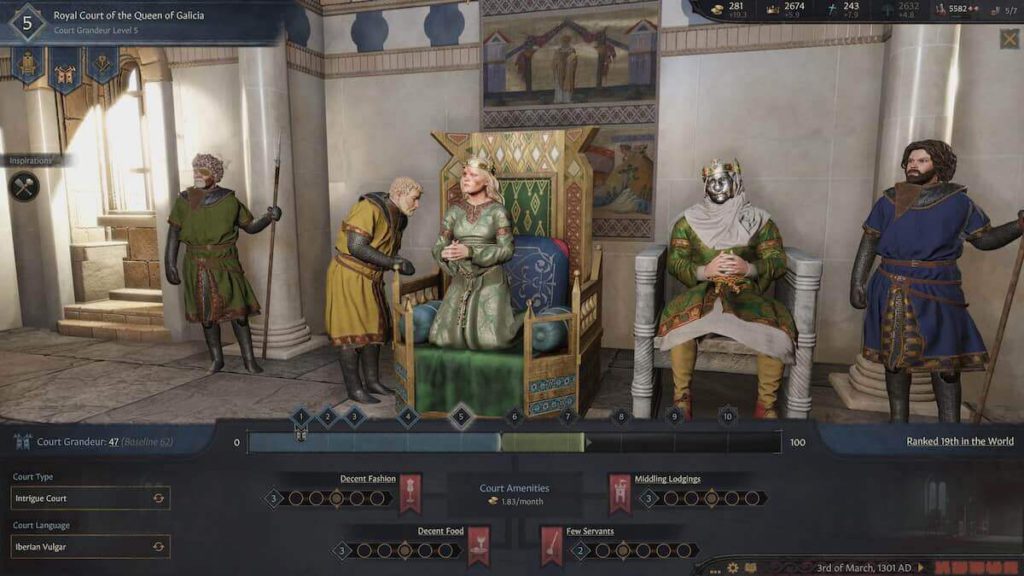
Crusader Kings III is a historical strategy game. Set in medieval Europe, it invites players to take control of a dynasty and wage war, conduct diplomacy and marry their relatives. The player can be challenged by other nobles and use assassination to remove a rival or even declare war against the king.
The game has been released on September 1, 2020. Crusader Kings III is set in the time period between 1066 and 1453. It includes all of Europe, part of the Middle East, north Africa and the British Isles.
➡ Response time vs Refresh rate?
The original Crusader Kings, a grand real-time strategy game about medieval European politics, was released in 2004. It was a rough and unapproachable game, but its reputation grew over time because of its unique flavor.
Crusader Kings 2 came in 2012 and changed everything by fixing the prequel’s shortcomings, adding tons of new features and making the series as accessible as it is intricate.
Crusader Kings 3 strikes a great balance between staying true to the previous games while building up on them in dozens of meaningful ways. The result is an even more detailed, diverse and ultimately satisfying experience than before.
One of the biggest additions is the way the game now handles character traits and ambitions.
Whereas before your ruler’s personality was determined by a set of randomly-generated traits and quirks (such as being sadistic or gluttonous), now all characters have their own sets of aspirations they want to fulfill and flaws they want to overcome — and doing so can help influence their personality in different ways.
➡ 5 Best FPS games for PC right now
While it may seem like a minor improvement on paper, it makes for richer stories that often take surprising turns as characters achieve or fail to achieve what they set out to do.
The core conceit remains the same: You play as a medieval ruler of one of hundreds of different dynasties, and your goal is to establish and expand your family’s power and prestige through any means necessary.
Every decision has consequences, however, and the game’s rich simulation is always reacting to your actions. I have personally played as an African empress, a highland Scottish chieftain, a Germanic warlord — each one with their own experiences and stories.
Longtime fans will feel right at home with Crusader Kings III’s systems, but for those who are new to the series or grand strategy games in general, Paradox has made this entry far more accessible.
The core of the Crusader Kings experience is in watching your ruler — be it a king, duke, queen regent or even an empress — live out his or her life.
You have a lot of control over the major decisions they make, but they have free will, too. They might fall in love with someone you don’t like. They might take up boar hunting as a hobby.
They might get addicted to drugs, or fall prey to depression (or both). All of these things can have a real impact on their ability to rule and on their relationships with other characters, which means they can have a real impact on your strategy.
I’ve had rulers who were so unpopular that their vassals plotted against them for years before finally deciding to take matters into their own hands and declare war (which isn’t without risk — if you lose that war, you’ll likely be forced to abdicate your throne).
The Crusader Kings series has always been a bit of an enigma. It’s built around “grand strategy,” but it’s not nearly as dry or as tedious as that genre tag implies.
Sure, you manage the armies and treasuries of medieval kingdoms, but the focus has never been on those things so much as the people who led them: rulers and their heirs, advisors, priests and generals. You don’t play as a nation. You play as a person.
The game is defined by its extreme attention to detail, both in terms of how you want your characters to look and behave and how they’ll respond to the many situations they find themselves in over the course of their lives.
And it takes this level of granularity further than any strategy game I can think of.
While the medieval politics of intrigue and subterfuge might be in the game’s name, warfare has always been a major part of the Crusader Kings experience. In CK3 it’s more dynamic and exciting than ever – although, as with everything else here, there’s still plenty of room for growth.
The general remains out of sight during combat, but their stats will affect the behaviour of their army and give them bonuses such as increased morale. The biggest addition to this system are Knights – powerful individuals who can turn the tide of battle. The more you have in your force, the higher your chance of winning a conflict (although this can be mitigated by some traits).
Knights aren’t just useful for fighting wars. They can also be used to make an arrest during Intrigue actions such as Scandalize or Incite Rebellion, and will help your general carry out better sieges.
Crusader Kings III is a game full of moments. Moments when you realize a decision you made decades ago has finally come to fruition. Moments when a major event, like the death of a sibling or the birth of a son, determines the course of your dynasty for generations.
Moments when you catch your breath in awe at the scale and scope of what’s possible in this ridiculously ambitious strategy game (and, inevitably, moments when you pull out your hair in frustration at its unyielding complexity).
All those things were true of Crusader Kings 2, but they felt bigger and more impactful here because CK3 was built to accommodate them with better clarity and accessibility.
Some elements feel less grand than they did in that classic grand strategy game — map resolution is lower, and diplomacy isn’t as deep — but CK3’s suite of systems are more connected and interdependent.
The result is that it tells more interesting stories in more interesting ways. It also feels like more of an adventure than its predecessor:
While some players would spend hours carefully planning every move in CK2, I felt like I was rolling dice with each major decision I made in CK3 — hoping for good fortune, but always ready to react if it didn’t go my way.
Crusader Kings is a game so vast, so engrossing, so steeped in its history and the lives of its characters that I can only wonder how it will play out once I finally meet its end.
For now, the nteractivity between my characters and the world is still enough to make tweaking my strategy useful; it navigates a delicate balance between allowing players enough freedom to express their characters’ desires and personalities with minimal consequences (whether those choices actually lead to a victory or not), and keeping things within a realistic framework (which makes for more compelling storytelling).
Crucially, this is one of those games that gives you all the tools necessary to succeed, but also allows you to fail spectacularly too.
5. Portal 2
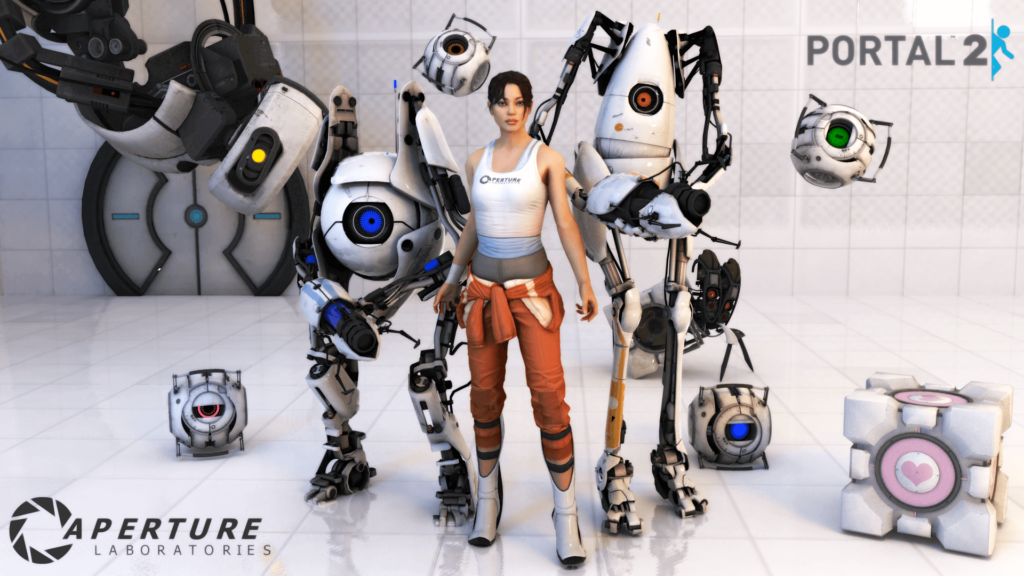
Platforms: Linux, PC (Microsoft Windows), PlayStation 3, Xbox 360, Mac Genre: Shooter, Platform, Puzzle, Adventure Developer: Valve Corporation Publisher: Valve Corporation, Electronic Arts Release: April 19, 2011
Portal is a first-person adventure puzzle video game developed and published by Valve Corporation. Portal is set in Aperture Science Laboratories and consists of series of puzzles involving portals and other physics-based tools.
For all these reasons, it’s hard to tear yourself away from Portal 2. Though it has its weak moments, the game is an incredibly strong puzzle platformer that pushes you to think in new ways.
And though its story may not be perfectly delivered, it’s a delight to visit this world again and see what has changed since the events of Portal.
Portal 2 is a game that’s not afraid of silence. Stifled by her imprisonment in the first Portal, GLaDOS has mostly lost her voice this time around, and you’re left to explore the abandoned test chambers of Aperture Science with little more than your own footsteps and the hum of machinery.
But as you venture further into the facility, the sinister history of Aperture Science comes to light. The company’s founder, Cave Johnson, was obsessed with his legacy, and he found an interesting way to preserve it: he started recording messages for himself in the future as a means to live on after death. In a way, these messages are a lot like games themselves:
An artificial world crafted for us to explore and interact with. They’re not just memories; they’re portals into another place and time.
The Portal series is about powerlessness.
The main character never gets a name or personality to make her unique. She’s just Chell (or whatever you decide to name yourself), an anonymous lab rat who must put up with GLaDOS’ seemingly endless abuse while being subjected to physical and psychological torture in the form of hazardous environments and crazy puzzles.
Like the original Portal (2007), players solve puzzles by placing portals and teleporting between them. Portal 2 adds features including tractor beams, laser redirection, bridges made of light, and paint-like gels that alter player movement or allow portals to be placed on any surface.
In the single-player campaign, the player takes the role of Chell as she attempts to break the grip of GLaDOS, an artificial intelligence (AI), on the Aperture Science Facility; Chell is aided by Wheatley (Stephen Merchant), a personality core who wants to help her escape.
I’ve run out of ways to say this: Portal 2 is a brilliant game. It’s very, very funny and tremendously exciting, but most of all, it’s incredibly clever.
I’m not just talking about the puzzles, though those are obviously smart. I’m talking about the way the game teaches you to think in new ways and expands its scope so gradually that you don’t even realize you’re solving mind-bending test chambers until you’ve already done it five times.
But most of all I’m talking about how Portal 2 tells its story, using little tricks and nudges to impart information without ever being heavy-handed or breaking the fourth wall.
6. Mad Max
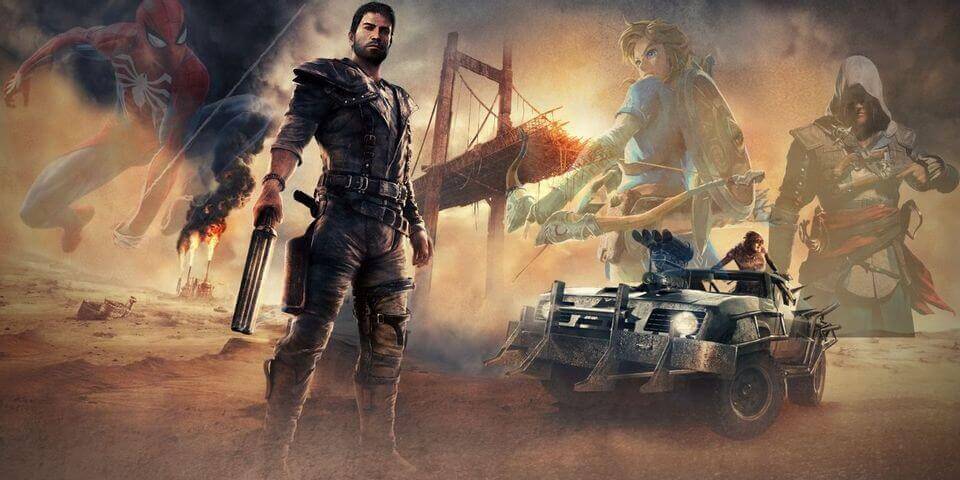
Mad Max is an action-adventure game about vehicular combat, complemented by brutal close-up action and faily-long-distance shooting. You are Max, a lone warrior in a storied post-Earth civilization, and you’ll drive your car into goofy shapes as you spin through the western half of a desert continent to survive.
I had a lot of fun playing the Mad Max game — something that I wasn’t expecting going in. After all, how could a game about one of the most iconic anti-heros of all time live up to that legacy?
Working my way through the campaign over a couple weeks, I found myself consistently surprised by the way Avalanche Studios handled almost every aspect of the gameplay, from combat to vehicle mechanics to exploration.
There were some missteps along the way — like some frustratingly challenging difficulty spikes and the fact that I’m never really clear on what my next objective is unless I remember to check the map screen — but those issues weren’t enough to stop me from enjoying what is an impressive open world action experience.
Max is haunted by visions of the dead, and attempts to understand why this is happening by consulting with Chumbucket, a religious zealot who obsessively worships his car. Max has no desire to be a hero and only cares about one thing: getting his Interceptor back from Scabrous Scrotus, a vicious warlord who rules over Gas Town. He agrees to do whatever it takes, even if it means helping people in need.
The wasteland of Mad Max is much more vibrant than previous entries in the series. While it’s still full of death and destruction, the world feels more alive than ever before. Whether you’re driving around or on foot, there’s always something to see or do.
The wasteland is a harsh, unforgiving place, and you’ll be hard-pressed to find a character or individual story that doesn’t reflect that. This is an intentionally cold, isolated world, and Avalanche has done a great job of making it feel like one. Max’s journey is a typical hero’s tale – he’s wronged by the antagonist and seeks revenge.
The unique twist here is that even Max himself is not made to be likable in the traditional sense. He’s a rugged survivor of the wasteland who acts on his own behalf, but knows when to do the right thing. If anything, I felt more for Chumbucket, Max’s naive mechanic who believes he was chosen by God himself to build The Magnum Opus (his vehicle).
Chumbucket is what makes Mad Max truly worth playing; his optimism and belief in Max’s abilities are refreshing in this grim world, and he provides much of the emotional heart of the game.
Avalanche Studios has crafted an engaging story from this setting, one that constantly keeps you moving forward, while also encouraging exploration through item collection and side quests.
As Max, you’ll have to build up your arsenal to take on any threat – both human and beast. The most important tool in your arsenal is the Magnum Opus, Max’s car that can be customized into a true beast of battle.
You see, Max is not much without his car. He can drive around the open world, scanning different areas and marking enemies with his binoculars to take down gang strongholds or simply explore the various nooks and crannies of the wasteland. However, any fight with other humans will require you to get in your car and run them over – or let Chumbucket handle it for you.
To say Mad Max is an open-world game is an understatement; it’s massive and packed with content. I’ve played for about 30 hours and still have dozens of activities to complete, including the core story missions, side quests, convoys to hijack, scattered collectibles to find, strongholds to liberate, and more.
There are multiple types of races you can take on (including some inspired by the movie), each offering a different type of challenge. Some have you using your harpoon to keep up momentum or knock down barriers; others have you using your shotgun to blow up opponents’ cars.
The races are fun, but they’re not as engaging as they could be due to the relatively low stakes involved. You can lose a race without any negative consequences other than having to start over from the checkpoint.
Combat in Mad Max is its own rewarding adventure. It’s focused on melee fights rather than gunplay; you never use a weapon other than your fists or a club, and your gas-guzzling Magnum Opus (a sweet car that replaces Max’s V8 Interceptor from the movies) is used only for vehicular combat. There are different types of enemy combatants who require different strategies.
Mad Max is an incredibly ambitious project, and one that could have failed in the hands of a hurried, less talented studio. Avalanche Studios should be applauded for their success, particularly on the technical side. The PC version is stunning in its clarity, which makes me wonder how great it would look if the team had ironed out some issues before release. Still, the frame rate problems can be a serious nuisance as they often ruin immersion and drag down the entire experience with them.
In addition to technical issues and slightly underdeveloped story beats, Mad Max isn’t for everyone. While it’s fun to play around in the world right away, Avalanche’s title truly shines when you follow side-quests to clear out locations of bandits or locate scarce car parts–even if they do feel like busy work at times.
The real fun is creating your perfect vehicle with everything unlocked and raiding enemy car convoys while crushing enemies in head-on collisions.
Ultimately, you’ll find your own experience in Mad Max to be enjoyable and varied, but I wish it had been shorter. Though the game is only loosely based on Miller’s vision of a wasteland, Avalanche uses its lore perfectly to create an engaging world full of wonders – and horrors – that’s never been larger or felt more alive.
7. Cuphead
Platforms: PC (Microsoft Windows), Mac, PlayStation 4, Xbox One, Nintendo Switch Genre: Platform, Adventure, Indie, Arcade Developer: Studio MDHR Publisher: Studio MDHR Release: September 29, 2017
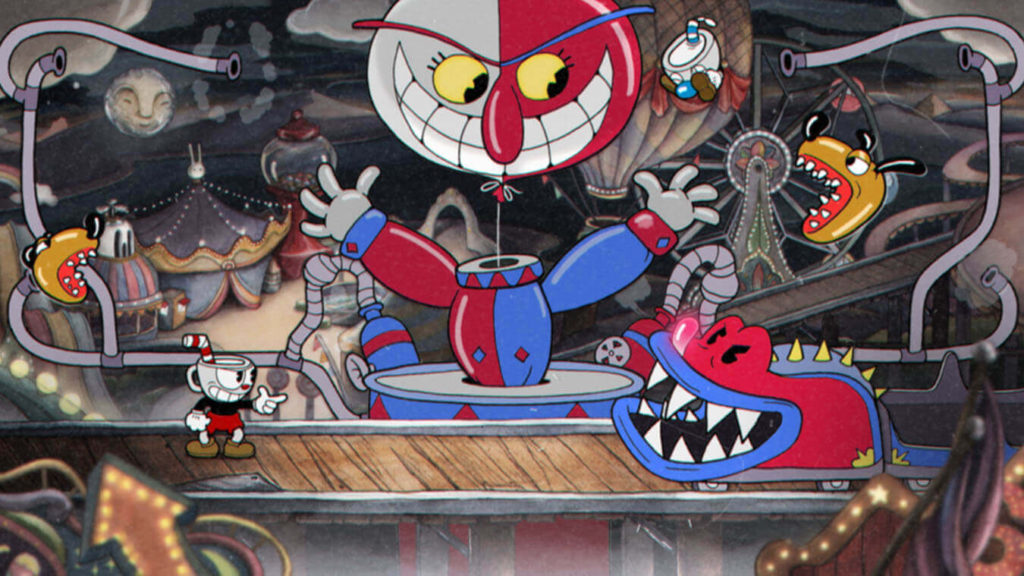
Cuphead is a classic 2D platformer video game with run and gun gameplay, in which players control Cuphead or his sister, Mugman, as they travel through various stages to collect the contracts on (and then repay) King Dice’s debt.
It features hand-drawn animation in a style that’s somewhat similar to that of the Fleischer Brothers’ “Betty Boop” and “Popeye” cartoons from the 1930s. Its art style has seen numerous comparisons to the work of Japanese animator and director Junji Ito.
The first thing that hits you about Cuphead is the look. It’s the kind of thing you’d expect to see in a museum, not a video game. The visuals are hand-drawn in the style of 1930s cartoons, complete with grainy film-reel textures and intentionally erratic frame rates. The result is as beautiful as it is terrifying – especially during the action scenes.
The second thing that hits you is the music. Cuphead’s score is an amazing collection of jazz, swing and ragtime tunes that accentuate every aspect of the game brilliantly. They fade in and out at all the right times, ramping up during intense moments and softening when things slow down. It’s one of those games where you can keep playing even after dying just to listen to the music.
Then there’s the gameplay itself, which has its roots firmly planted in classic arcade shooters like Gradius.
Cuphead has a very simple structure: you go along a line of islands, each with its own boss. You defeat the boss, you move on. You can do some side quests if you want, but they don’t really affect anything. If you die, you go back to the beginning of that island. That’s it – there is no further progression or significance of any kind.
It’s all wound up in an action-platform structure, which is equally good. Cuphead and Mugman (you can play as either) make their way through short levels that often end in a boss fight, but the shooting action is broken up by occasional side-scrolling platform sections. These are a little clumsy, but the boss fights are outstanding – some of the best ever made, in fact.
They’re tough and inventive and surprising, with each one offering something new to learn. Just as you think you have one worked out, it throws another curveball at you.
The game’s only failing is its storytelling. It’s perfectly functional – there’s an opening cutscene that sets up your quest – but it doesn’t really add much beyond presenting a reason to play the game.
Cuphead’s biggest asset is that it makes no apologies for what it is, and it’s this purity of vision that makes it so utterly captivating. It doesn’t need the DLC to be a valid product; what it does have is hours of unique gameplay, beautiful art and sound, and a devilishly psychedelic 1930s animation style that’s like nothing you’ve ever played before.
Every boss has some unique twist or mechanic to make them memorable – even the most tedious one – and the only thing you’re doing to defeat them is learning their attack patterns as quickly as possible. Almost every mechanic used in Cuphead feels new, yet somehow familiar; once they click they’ll be hard to forget.
Other than a few small complaints, Cuphead surpassed all my expectations in terms of overall quality. While I personally prefer short platformer experiences due to the lack of significant mechanical changes throughout most of the game, Cuphead’s excellent boss fights kept me engaged until the end. Each fight is exciting, but never frustrating.
The tradeoff between skill and random chance when gambling your coins is perfectly balanced, and the satisfaction gained from beating a particularly stubborn boss is incomparable.
In the end, I think that it’s worth the money. Playing Cuphead is a joy, even despite its difficulty, and I wouldn’t hesitate recommending it to anyone with an appreciation for challenging, rewarding games. It’s a tough platformer and sometimes you might need to grind out a level for a few hours in order to finally beat it (but there are save points, so no sweat).
8. Stardew Valley
Platforms: Linux, PC (Microsoft Windows), Mac, Android, iOS, PlayStation Vita, PlayStation 4, Xbox One, Nintendo Switch Genre: Role-playing (RPG), Simulator, Indie Developer: ConcernedApe Publisher: ConcernedApe, Chucklefish Games Release: February 26, 2016
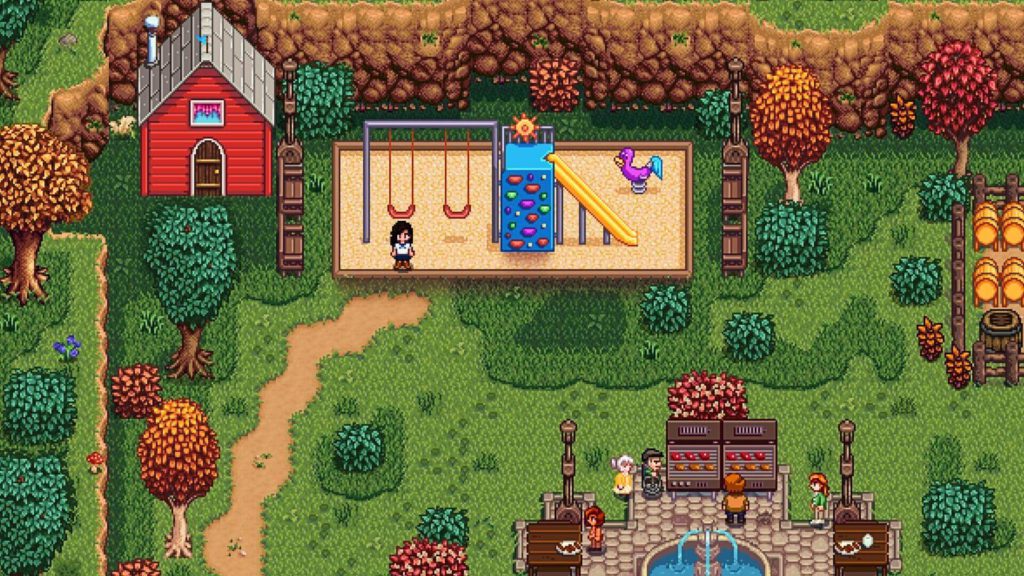
Whether you’re following the story of a farmer trying to bring back a troubled small town or just scooping up crops, animals, and minerals by yourself, Stardew Valley is an excellent singleplayer farming RPG.
Stardew Valley is a farming simulation game set in a small, idyllic town. You’ve inherited your grandfather’s old farm plot in Stardew Valley. Armed with hand-me-down tools and a few coins, you set out to begin your new life.
Can you learn to live off the land and turn these overgrown fields into a thriving home? It won’t be easy. Ever since Joja Corporation came to town, the old ways of life have all but disappeared.
The community center, once the town’s most vibrant hub of activity, now lies in shambles. But the valley seems full of opportunity. With a little dedication, you might just be the one to restore Stardew Valley to greatness!
Even better, it’s now even better thanks to a large update that brings in several new features and content items. Farms can be expanded with new areas, new building types appear (including elevators to create multilevel farms), and animals can have their own barns and animal houses instead of sleeping outside as one large herd.
It can all get pretty elaborate with new types of fences for narrow spaces and multiple levels for housing chickens.
Plus there are fish hatcheries, bee houses, and even a place to cook up gourmet recipes thanks to the addition of kitchen counters for extra cooking space.
And it doesn’t stop there: Animals will now produce fertilizer when they do poops, windows will reflect the seasons on your farm, trees have been retooled so they grow in real-time rather than at predetermined times per day, there’s more co-op multiplayer support with up to four players joining in together to farm – basically this is a game that took some time off from expanding into a full-fledged mainstream simulator.
Stardew Valley feels like a game that’s been carefully crafted to be someone’s ideal vision. It’s easy to spend dozens of hours on the land, but it’s up to you how you want to spend them. Do you want to farm, mine, fish, or fight monsters? You can do all of those things and more, and the game doesn’t force you into one specific path.
The most important thing that Stardew Valley gets right is its sense of tranquility. There’s no pressure in this game, even when it comes to making money. You’re given an open-ended goal of earning enough money to buy back your grandfather’s farm at the start of the game – and that’s it. There are no time limits or high scores; there aren’t even any leaderboards. Stardew Valley is just about enjoying life in this sleepy little farming town for as long as you’d like.
Stardew Valley does have some faults, however minor they may be. I noticed some small graphical issues here and there — sometimes characters’ hair would clip through their heads or items would hover slightly above where they should be on the ground — but these are easy enough to ignore.
More than anything, I was pleasantly surprised by Stardew Valley. I knew it would be a grind, but there is so much charm to it that I didn’t mind the repetitive nature. You’re rewarded for your efforts with every new person you meet and every new slime you catch, as you spread your wings and venture further into the valley. With a huge amount of content – over ten hours if you’re only focused on getting married and not a lick of what’s outside of that – it’s hard not to fall in love with Stardew Valley.
Wrapping up
Adventure games have come a long way. Back in the day, these titles were quite simply text-based affairs, where you’d type in commands to make your character move around the game world, interact with objects and other characters and try to solve puzzles.
Today, adventure games are still available in text-only format, but are most commonly found as graphical experiences that are rich and immersive. These games offer an interactive experience that is often devoid of combat — though there are plenty of action-adventures that include combat as well.
